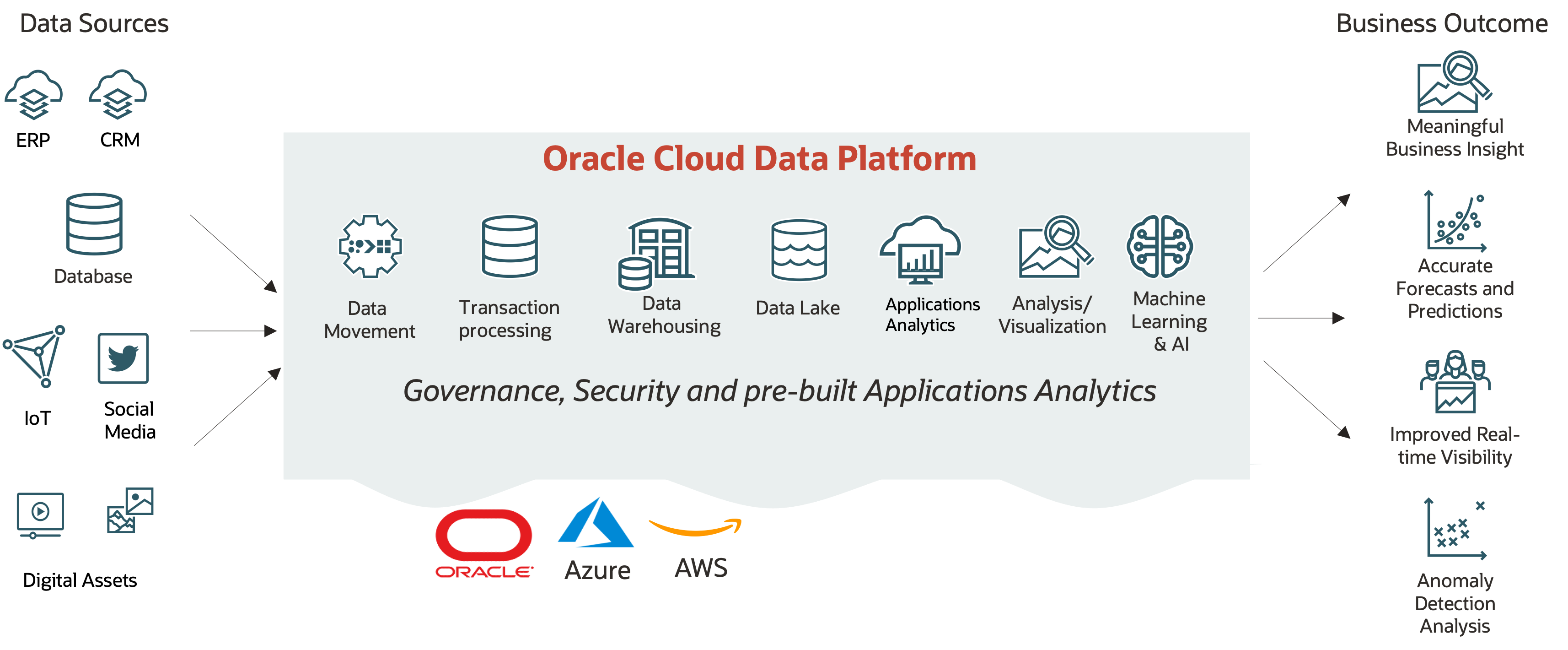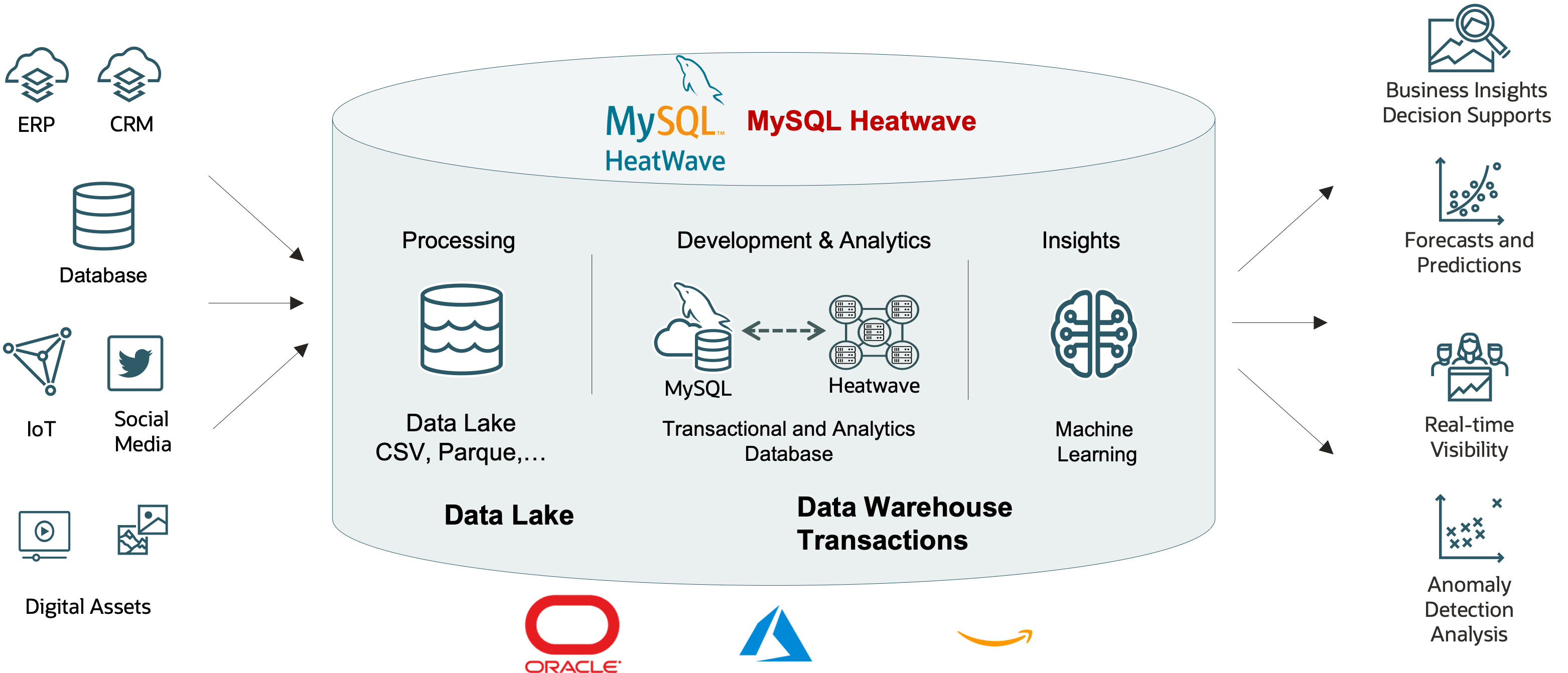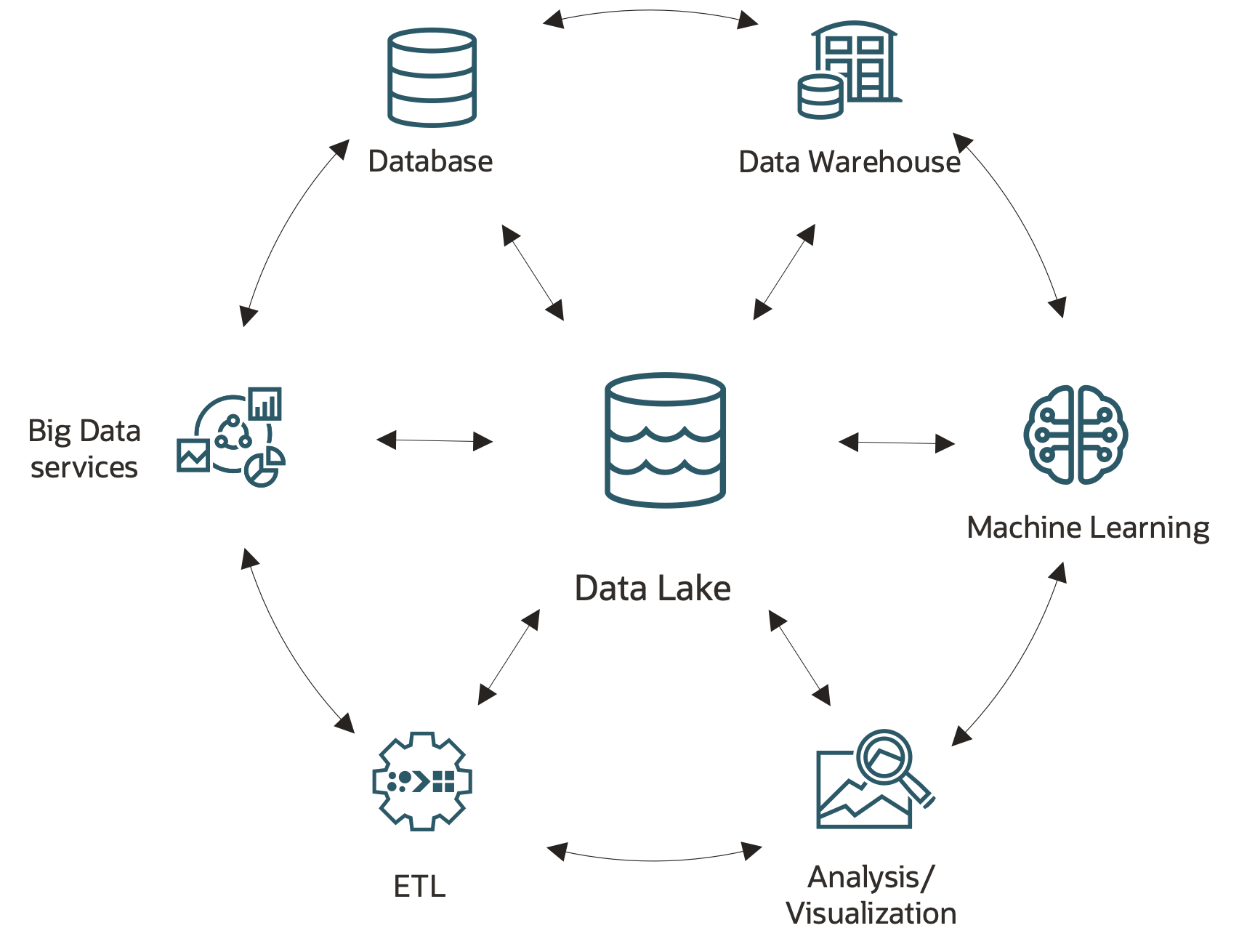Want business success? Data is the key.
In our last post, we reviewed the evolution of data warehouses, big data, and data lakes. We also mentioned that today’s needs in data management include the following examples:
-
A unified data platform
-
Support for open source
-
Integration of artificial intelligence (AI) and machine learning (ML)
-
Pay-as-you-go pricing
-
Support for multicloud
Other cloud platform vendors have responded by releasing multiple services that are tailored to specific use cases. This choice often leads to an expansion of services rather than a holistic solution. For example, Google Cloud offers eight different data management products (with significant overlap). Amazon Web Service (AWS) offers at least ten.
The challenge is that you must figure out which service—or combination of services—is best for your needs. Each extra service adds data movement, design, and maintenance. That’s not really a unified platform but a collection of parts with the drawback of more administration.
In contrast, Oracle has chosen to take its popular, proven database experience and break down traditional barriers encountered by other databases. The Oracle Cloud Infrastructure (OCI) Data Platform has the following features and capabilities:
-
Combines transactional database, data warehouse, and data lake capabilities into a single platform of choice
-
Supports all types of data (structured, semi-structured, and unstructured)
-
Supports all usage scenarios (reporting, analytics, artificial intelligence, and business applications) with predefined integrations with software as a service (SaaS)
-
Runs on major cloud platform vendors, with OCI offering the most options

Let’s review the architectural choices that Oracle offers so that you can select the best data platform for your needs.
Oracle Autonomous Database platform
If most your data is already inside a relational database in a structured format and you’re planning expansions, then the all-in-one Autonomous Database platform is the solution. Oracle Autonomous Database is the well-known Oracle database that adds zero administration and includes spatial, graph, JSON, MongoDB API compatibility, machine learning, and artificial intelligence capabilities. Instead of choosing between transactional and analytical capabilities, you can get both in one system.
Autonomous Database also extends its reach to OCI Object Storage, AWS S3, or any S3-compliant object storage. You can read and query object data just like tables, using the full power of the Oracle Database. This capability is especially exciting for data engineers and data scientists, who can examine object data with familiar Oracle SQL and then combine those results with existing data in the Oracle database for rich results. Autonomous Database supports data in object storage that are in delimited text, JSON, Parquet, Avro, and ORC formats.

MySQL Heatwave
Maybe you’re more familiar with the world’s most popular open-source database: MySQL. Oracle now offers MySQL HeatWave, which is a managed database service that combines transactions, analytics, and machine learning into a single cloud offering. It delivers real-time, secure analytics without the complexity, latency, and cost of extract, transform, and load (ETL). MySQL HeatWave is available on OCI, AWS, and Microsoft Azure.
MySQL HeatWave adds a scalable, analytical engine that transparently and continuously mirrors the data in MySQL. As each query runs, HeatWave automatically evaluates the query and responds from the analytical engine when advantageous. No change is needed to your applications.
HeatWave also accelerates machine learning by letting you build models in the service instead of having to export data out to yet another specialized service. Developers and data scientists can continue using their existing tools, such as SQL, Jupyter, and Apache Zeppelin, while working with the data in a single environment.

Like Oracle Autonomous Database, Oracle has enhanced MySQL to directly read data in object storage. We call that feature the MySQL HeatWave lakehouse. The lakehouse gives developers and data scientists a unified platform to run transactions, analytics, and machine learning applications.
Managed open source for Big Data
The previous scenarios are a great fit for data that is mostly structured as well as for developers with experience in the leading database technologies. But what if your data is mostly unstructured? What if you’re more experienced with Hadoop-based environments?
Oracle offers several managed services based on Spark and Hadoop to ease your migration into the cloud while using your familiar tools. Using services based on open-source technologies affords you more control over your operations while running on the secure and reliable OCI infrastructure. With this architecture, you can quickly move your existing cluster into OCI (or create a new data lake).
You can complement these services with easy-to-use artificial intelligence services, such as speech-to-text, sentiment analysis, image analysis, and more.

Modular approach
Finally, some advanced scenarios don’t match any of the previous options. You need specific capabilities, and you need to assemble them in a particular manner. Oracle’s comprehensive portfolio of services allows you to build your own, personal data platform.

Conclusion
In this blog, we’ve explored four different architectures of the Oracle Data Platform. Each one breaks down barriers between transactional and analytical, data warehouse and data lake, and database and object storage.
In our next blog, we look at success stories that use these architectures.
Explaining Modern Data Management Part 1
Explaining Modern Data Management Part 3

